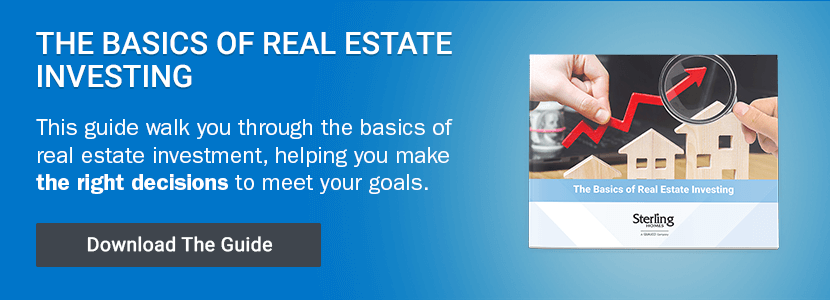Buy and Hold vs Flipping Houses: Which Investing Style is Better?

There are two primary types of real estate investors: those who buy homes for a good price, make necessary updates or repairs, and “flip” them by selling them for more money just a few months after the initial purchase; and those who buy the property and hold it for a long time, earning their money through rental income.
Which one of these investing styles is better?
The answer, of course, is complicated. The right answer depends on a variety of factors, but essentially boils down to personal style. If you’re not sure which style is right for you, we’ve put together a list of questions you can ask yourself to come up with a more solid idea of where you stand. We believe that if you’re answering these questions honestly, the answer should be obvious.

Do You Want an Instant Cash Boost or Long-Term Income?
This biggest difference between the two investing styles is how the investment pays off.
When you flip a home, you often are able to get a big influx of cash – usually $30,000 or more – by selling the home for more money after you’ve made the necessary repairs.
However, similar to other types of high-reward investments, flipping homes comes with a high level of risk. For example, you may not be able to sell the home quickly or for as much money as you thought you would. Or repairs could cost more than you anticipated, eating into your profits. Experience can reduce these risks, but it won’t completely mitigate them.
The buy-and-hold strategy, on the other hand, offers less risk. There’s a good chance that you’ll be able to find renters for your property, especially if you’re investing in brand-new homes. You also get to benefit from receiving a steady income over time. However, the income you earn is initially much less than you’d get from flipping. Monthly cash flow might be $400 per month from each property. And vacant properties can eat into your profits. This method is the safer choice, however.
Can You Make Your Own Repairs?
If you have experience in home construction, flipping homes is going to be a lot more attractive to you. You’ll be able to look at a home and know what type of work needs to be done, and with your experience, you can quickly estimate the cost. If you’re willing to put in the “sweat equity” yourself, you can make bigger profits when you sell the home because you won’t have paid for labour.
On the other hand, if you don’t have these skills, you might make the mistake of buying a “money trap”: a home that requires far more repairs than you thought. And since you’re paying for labour, you could earn far less from the sale than you expected.

How Well Do You Know the Local Market?
Success in home flipping is often reliant on a deep understanding of the local real estate market. You’ll need to know what the homes in a particular area look like and what they usually sell for. This allows you to recognize that great deal when you see it. It also keeps you from making upgrades that will price your home out of the market.
If you don’t know the area well, the buy-and-hold strategy is probably best. In fact, some investors don’t even live in the cities they invest in. They rely on property management companies to do the legwork for them.

Have You Considered Tax Implications?
Taxes are complicated, and everyone has a different situation. However, it’s important to note that these real estate investments are taxed in different ways. When you flip homes, the income you earn is considered capital gains. This has a relatively high tax rate compared to earned income. The income you get from buy-and-hold investments is considered investment income, and it’s taxed at a lower rate.
We recommend talking to a tax professional before you make your decisions.
Do You Need Access to Liquid Cash?
You should also think carefully about how much cash you need to have on hand. When you flip a home, your money is tied up in that home until you sell it. In many cases, a home can sell within a month or two, but if you have trouble selling the home, you may have to wait longer before you can access your money. Once the home sells, though, you’ll have plenty of cash in the bank.
With buy-and-hold, things are a bit more complicated. Most investors can count on a few hundred dollars each month for each property they own. Additionally, each mortgage payment adds to the equity in the home. Buy-and-hold investors can typically tap into this equity with a HELOC, though that money has to be paid back with interest. The benefit here, though, is that it is usually easy to tap into that money.
Clearly, these two types of investing styles are very different, and you can see how they can appeal in different ways. It’s up to you to find the method of real estate investing that’s right for you.
About the Author:
Learn more about:
Sterling Homes - Home Builder in Edmonton
Start The Home Buying Process Now












